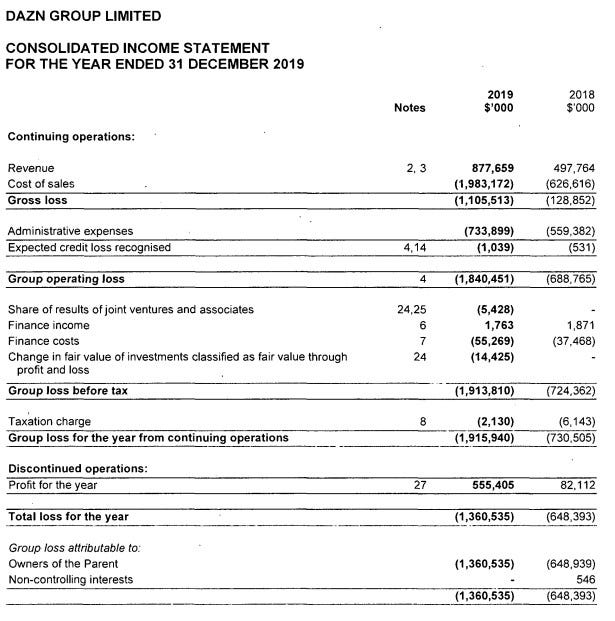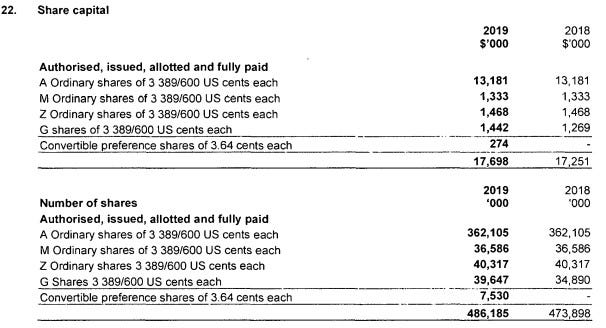Everyone knows that 2020 was a challenging time in sports as the global impact of the Covid-19 pandemic shut down live audiences for most of the year. It wasn’t until the fall that some venues starting letting limited amounts of fans back into stadiums.
But I am not here to talk about 2020. No, gentle reader, I am going to take you on a trip back to those halcyon days of 2019. An innocent time when the boxing world was on fire with a stack of new deals with broadcasters, cable networks and yes, even the internet!
Of course, 2019 was the first full year of the DAZN USA’s boxing operations or as they’ve been referred to in certain circles, the “Quibi of Sports”. Packed with boxing stars such as Saul Alvarez, Demetrius Andrade, Jarrell Miller, Logan Paul, KSi and even featuring guest appearances from Anthony Joshua, DAZN was out to turn the world of boxing on its head with the promise that “PPV is dead”.
At the end of 2018, DAZN had an operating loss just below $700 million give or take a few million depending on the currency exchange. Well thankfully for the 2019 financial report DAZN switched to freedom dollars so I don’t have to figure out what the hell a pound is anymore. And believe it or not, in 2019 DAZN exceeded my expectations. I didn’t think they could do it but they somehow MORE than doubled their operating loss while selling off even more assets so Len could at least get some of his loan money back.
Yes, the little OTT that could wasn’t satisfied with losing less than a billion dollars, they set their hearts on a target and if not for the massive success of the Logan Paul vs KSi fight that brought in several thousand of dollars in revenue they could have broken that $2 billion operating loss mark for the year.
LET’S GO TO THE NUMBERS!

Now I know what you’re thinking, I promised a near $2 billion in operating loss and that bottom line only shows $1.36 billion! But if you draw your eyes to the middle of the picture you will see “Group loss for the year from continuing operations” as DAZN sold off the Perform Group side of the business to claim $555 million as shown on the line below. Wait, isn’t a $555 million profit a good thing? Well not really when all that money went back to pay off loans from Len’s every revolving number of LLCs/LLPs that finance this venture as evidenced further in the earnings statement.

YOU GET NOTHING!
Despite the proclamations that DAZN had reduced debt by 93% made by some outlets near the end of 2018, that reduction was just a conversion of a loan that had been issued in pound Sterling into shares with Len then setting up DAZN with more loans to operate in US dollars given America is the greatest country in the world or perhaps the launch of DAZN USA.
Converting loans into shares is what Len loves to do with DAZN but since most of you only really care about the performance of DAZN USA or what can be gleaned of it, let’s skip out on all that nerd finance stuff for now and look at the comparison of revenue between 2018 and 2019 by geographic area.

2019 Revenue

2018 Revenue
The revenue from the Americas included the second year of DAZN Canada, the first full year of DAZN USA and DAZN Brazil which launched in May of 2019. Given that DAZN does not provide any further breakdown of these areas, we must keep in mind that the proxy we are using isn’t wholly accurate. But the revenue for the OTT service increased for the Americas just shy of $99 million which might seem like an impressive increase until you consider that DAZN paid out over $220 million in the US just for boxing license fees, in my estimation.
Over $220 million! With the license fees paid to Matchroom USA LLC, DAZN’s joint venture with Matchroom boxing, accounting for $128 million of that amount. The relationship between DAZN and Matchroom is one that borders on insanity and the financials and structure of that deal warrants its own article.
Despite all the bluster of capturing a new market with YouTube fights or the strategic genius of delaying Alvarez vs Kovalev for the UFC, all of that flim-flam resulted in less than $100 million in revenue. Overall with additional launches in Europe in Italy and Spain, DAZN increased total revenue by $380 million while the cost of sales increased $1.35 billion. You don’t even have to do the math because DAZN did it for you. And this was before the pandemic!
In the end, just as I noted in the last look at DAZN’s finances, DAZN will exist as long as Len continues to fund it. And Len is at least willing to continue this venture until the end of 2021 even as he continues to sell off what’s left of DAZN’s actual profitable businesses. The media segment of DAZN being the latest victim of Len’s machinations.
But what really puzzles me is the continued outpouring of goodwill that DAZN garners in the pundit world. In an era where people are claiming “massive” losses for FOX or Showtime when the financials of the companies show positive results, why does an outlet that does nothing but lose billions while now reneging on fighter contracts continue to be championed? Just one of life’s mysteries.
PS — There is absolutely no evidence within the financial reports that Golovkin has been paid any amount of stock compensation in lieu of cash.
